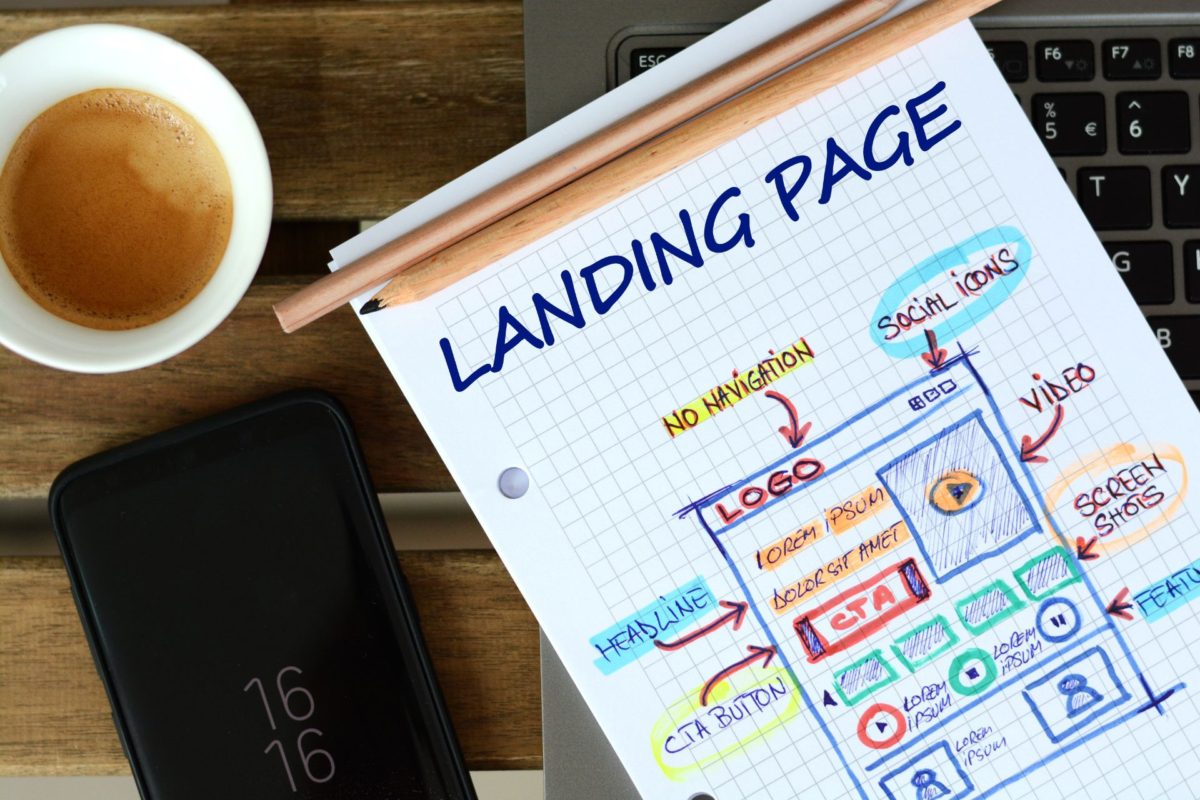This guide breaks down how to create a landing page that converts, guiding you through the process of selecting the right tools, crafting compelling content, designing with impact, and testing to ensure peak conversion rates.
On the internet, there are two types of web pages: a website and a landing page. It is important to understand that these two concepts have distinct applications, and many entrepreneurs struggle with deciding which one they need. Unfortunately, not everyone knows that a landing page is not the same thing as a website.
To assist you in determining the most suitable option for your business, we have created a landing page vs website comparison. Take a look and decide which one would be a better fit for you.
What is a website?
A web page can be a simple single page website, but it usually consists of many related web pages, called subpages. On those different pages, visitors can find detailed information about the company and its offer.
A company website typically provides an overview of the company’s history, explains what it does, and introduces its products or services.
Additionally, a website may contain various subpages, such as a login page, blog page, online store, contact forms, discussion forums, or other pages with specific functions.
Visitors can navigate the entire website via a navigation bar, which enables them to move easily between subpages.
Moreover, links to other pages are placed within the content of subpages, as this is essential for search engine optimization. Specialized pages allow visitors to contact the company, learn more about it, browse through its services and products, interact with other users, and even place orders.
What is a landing page?
A landing page is a web page designed to achieve a single goal: persuading users to take advantage of a specific offer. It can be either a separate single page website or a part of a multi-page website. It primarily aims to describe a service or a product and drive paid traffic.
The landing page typically includes a call-to-action (CTA) button or a box for users to enter their email address. It rarely offers navigation to other pages.
The main objective of a good landing page is to attract customers and increase sales. It is usually used in advertising campaigns.
Links from advertisements redirect those pages, which is why they are called landing pages. It is worth remembering that they are not optimized for search engines and are created strictly for advertising purposes.
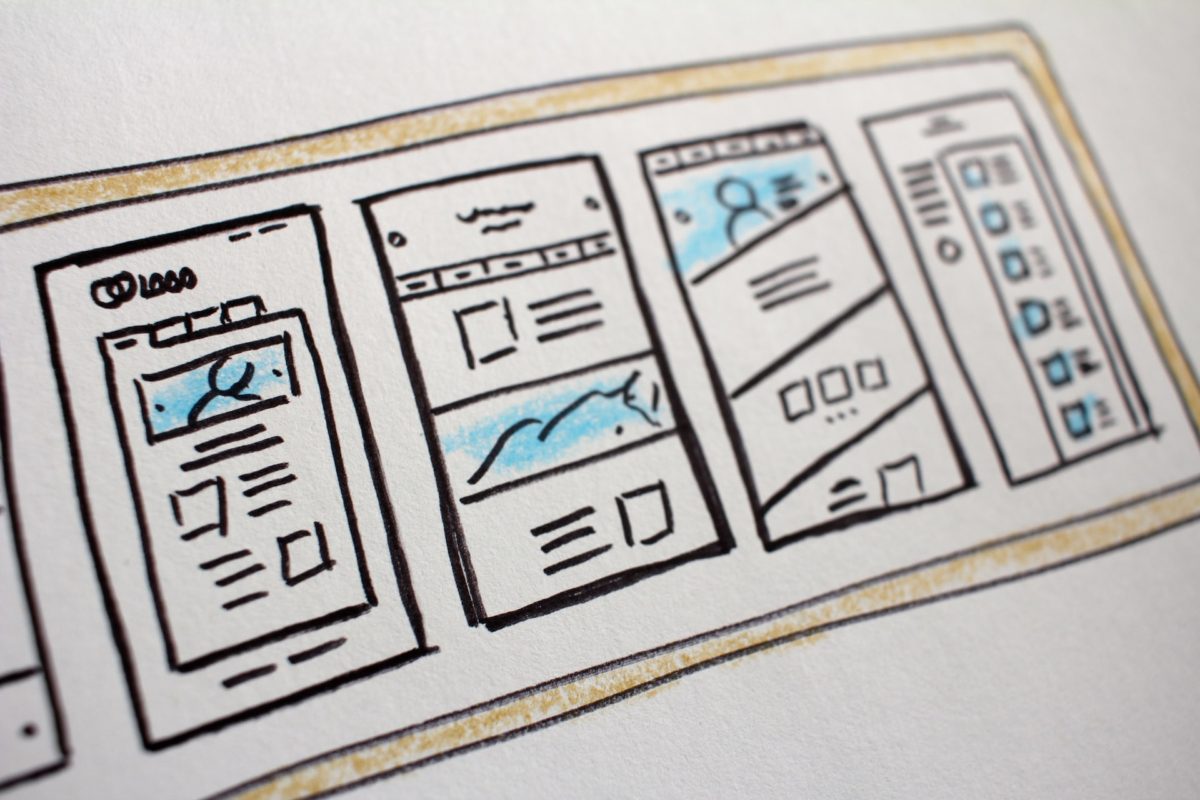
Types of landing pages
It is important to understand that there is not just one landing page type.
In fact, there are 7 different landing pages, each with their own key features. Before you begin creating your offer and launching advertising campaigns, it is valuable to familiarize yourself with each type of landing page.
1. Squeeze page
A squeeze page is a commonly used landing page’s type that aims to collect email addresses from visitors. Typically, companies will provide users with a free resource, such as an e-book or mini-course, in exchange for their email address.
This allows the company to build a mailing list and promote goods or services to those who have shown interest in its products. Squeeze pages usually include persuasive content that entices visitors to provide their email address.
2. Welcome page
This type of landing page is not directly relevant to a specific business or offer. Instead, it serves as an intermediary page that users are directed to before reaching their final destination.
It means the campaign first leads them to a welcome page where they can easily navigate to the desired location, rather than directing them there straight away.
The content of this page may include important messages or information, such as a question about the user’s preferred language or details about the site’s privacy policy.
3. Lead generation page – for potential customers
This type of landing page is similar to a squeeze page, but it allows you to collect more information from visitors.
In addition to email addresses, you can also collect names, company names, telephone numbers, and other relevant data. The specific information you collect will depend on the goals of your ad campaigns and the position of the client in the sales funnel.
It is important to understand that if your customers are at the top of the funnel, a long form may not be ideal as they may feel like you are asking for too much information. However, if a customer has already shown interest in your product or service and lands on a lead capture page, they may be more likely to provide additional details.

4. Long-form landing page
A long form page is a specific type of landing page that emphasizes sales through a more concise product or brand description. This approach can be more user friendly by reducing exploration time, speeding up the purchasing process, and avoiding customer frustration from being overwhelmed by too much information.
When creating a long-form page, it is crucial to take the customer’s perspective into account and address their potential inquiries and concerns. This means focusing on answering questions such as who the target audience is, why they should choose your brand or product, who has already benefited from it and what the opinions of customers are. You could also think about questions that are most frequently asked by users. By considering these factors, you can create a more effective long-form page that better resonates with potential customers.
5. Click-through landing page
This type of landing page is similar to a two-step opt-in or dual landing page. Initially, users are directed to a page with an offer description and call-to-action prompting them to take a specific step. They are taken to the next page where they can register or make a purchase only after clicking on a specific button.
This approach is commonly used by paid software and tool developers who offer a free trial period to potential customers.
For example, when a user clicks on an ad link, they are redirected to the first landing page with brief information about the program and the trial period, where they will find a “start trial” button.
Upon clicking the button, they are redirected to the next landing page, which includes the registration form for the trial period.
6. Thank you page
The purpose of the thank you page is to notify the customer that their registration or purchase process has been completed successfully and to express gratitude for putting their trust in the company.
Although this type of a landing page does not have a particular sales objective, it can serve as a chance to suggest something extra to the clients. Since a customer who has made a purchase is already motivated, they are more likely to return for additional purchases.
7. Coming soon page
For those who wish to introduce an exciting new product but are not fully prepared to launch it, creating a “coming soon” page is a valuable opportunity. Rather than presenting an unfinished landing page, a temporary page can be uploaded to generate anticipation.
On this page, it is worthwhile to provide a brief description of the upcoming offer, specify the release date, and include a call to action encouraging visitors to input their email addresses. As a result, the company can keep potential customers informed and notify them when the product or service becomes available.

Landing page vs website – when web pages are needed
Every company needs a website. It serves as a platform to showcase their business and offers numerous possibilities to users and customers.
Here is the list of functions that a website provides.
Sharing information about the company and telling its story
By utilizing subpages such as “about us”, “about the company”, “our mission”, and “contact” on a website, businesses can provide all the necessary information about their brand. When designing these pages, it is important to consider what customers may want to know and anticipate the questions they may ask.
The website structure enables companies to organize content in a clear and meaningful way, ensuring that visitors can easily find the information they are seeking. By organizing content according to customers’ needs, the website will be better received, and users will be more likely to scroll down to the bottom of the page.
Describing products and services
The vast competition on the Internet has made it essential for customers to gather as much information as possible before making a purchase or ordering a service.
Websites serve as the ideal platform to showcase products and services and highlight the benefits of using them. The primary objective of web pages is to inform potential customers rather than to sell to them.
Providing customers with additional features
If you wish to provide clients with features such as contact forms, online shops, appointment scheduling, order forms, registration forms, document downloads, educational materials, and access to social media pages, you cannot limit yourself to only one secondary page on your website.
For instance, a shop requires separate subpages for each product and additional pages to securely collect customer information and guide them through the entire purchase process. Similarly, in the case of appointment scheduling, you need access to a calendar, planner or form, which cannot be accommodated on one page.
Additionally, if you wish to allow users to comment on your content or participate in a forum discussion, you also need a dedicated website for that.
These features cannot be incorporated into a landing page. However, a website allows you to offer all the necessary features specific to your products, services, or business model, as well as for customers or employees.
Compared to landing pages, websites are typically more complex due to a variety of factors, such as their larger scale and incorporation of various third-party marketing integrations.
Helping to build relationships with clients
For the company and the brand, good relations with customers are very important. To ensure them, it is necessary to present all the information related to the business, such as goals, company mission, values, style, and voice, in more detail.
It is possible to create it on one page, but it is harder to get a clear and transparent message in this way. Therefore, it is worth providing this information on separate subpages of a large website.
Enabling the clients to find the company in the search engine
Only a website, in contrast to a landing page, can be optimized for SEO, which involves positioning your business in search engine results pages. This ensures that customers can easily find your business when looking for specific keywords or phrases.
It is not feasible to target several keywords on a single page. Therefore, it is necessary to create multiple pages, with each page being optimized for a different phrase. Additionally, incorporating internal links between subpages is also essential for SEO purposes.
Our custom website design services focus on creating SEO-friendly websites that rank higher in search results and drive targeted traffic to your business.
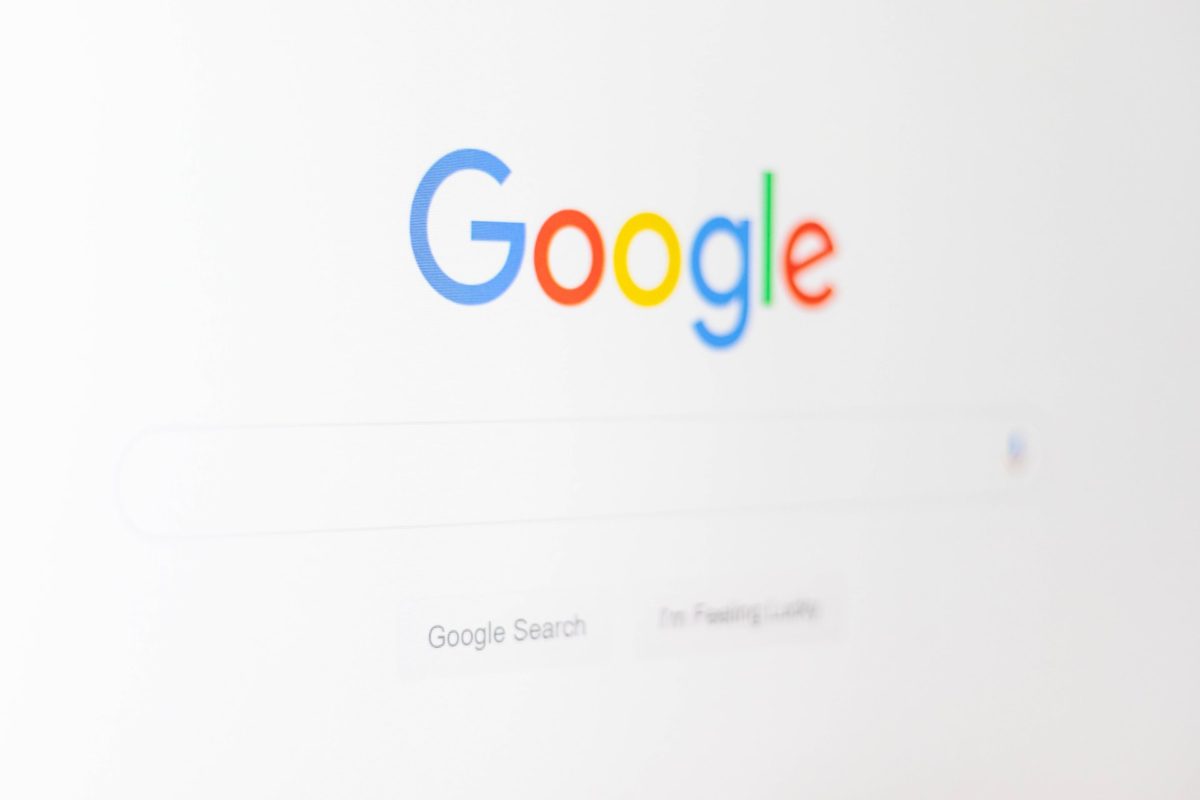
Allowing for earning opportunities
A website provides various ways to earn money. For instance, you can place banner ads on all subpages and generate income through user clicks. Additionally, you can earn revenue on a website by featuring sponsored or affiliate content.
Landing page vs website – when is a landing page needed
Creating a landing page is essential for promoting a specific offer using search ads, as it can help to achieve higher search results. Below are some benefits of using it for this purpose.
PPC ads
Google enables you to create pay-per-click ads, which are charged for each click. These ads are displayed at the top of organic Google searches. However, to launch such a campaign, you need a landing page where visitors will be redirected after clicking on the ad. This method can be used to promote specific products, services, discounts, trial periods, or events.
Email database
Landing pages are commonly used for lead generation, specifically to build email databases for future email marketing campaigns.
To achieve this, you need to create a lead magnet – a valuable offer or content that would allow you to capture leads from your target audience. It includes free e-books, webinars, trials, guides, or similar materials.
The landing page should feature a form to enter email addresses and persuasive content that can encourage visitors to do so. The personal details collected can later be used for email marketing campaigns and promoting paid products or services.
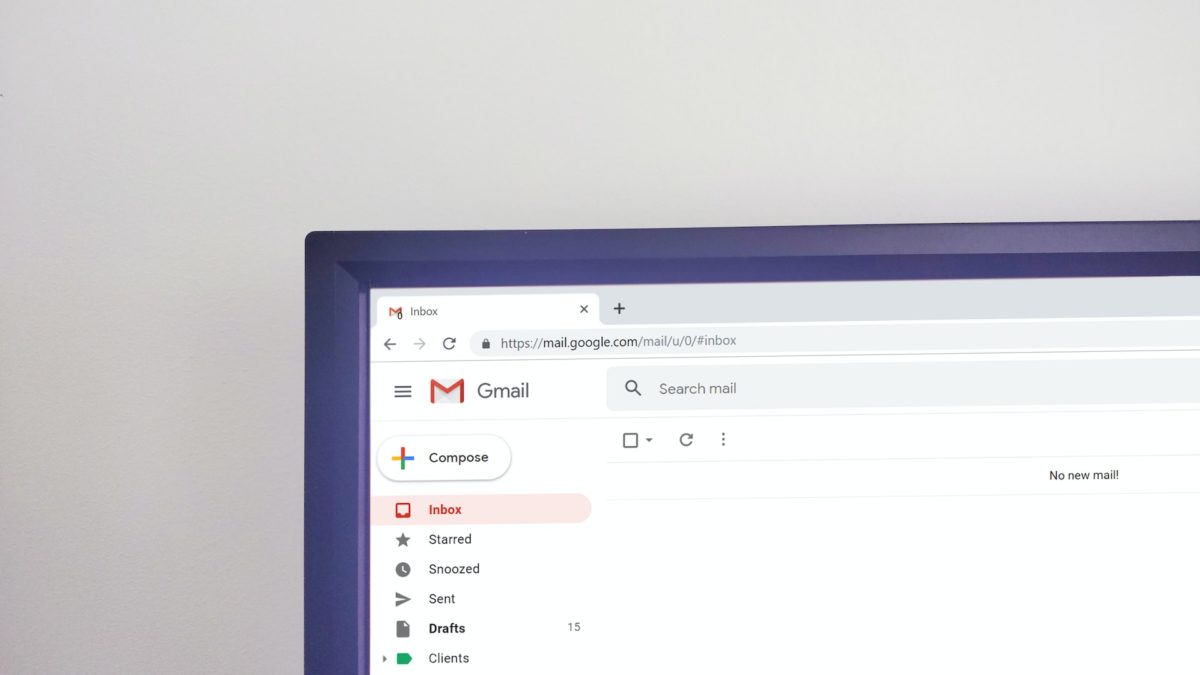
Capturing attention
A landing page is a minimalistic web page that can be more effective at catching each visitor’s attention than a traditional website. It is designed to eliminate any distractions, such as navigation buttons or links.
Instead, it focuses on attention grabbing copy and call-to-action (CTA) buttons that encourage the users to, for example, submit their information through a form. Once they have either taken advantage of the offer or decided not to, they are left with the option to return to their search results.
Opportunity to test different landing page’s versions
A landing page consists of just one page that serves a single purpose and therefore is much easier to test than a whole website with several pages.
Companies can try multiple versions of a landing page to find the best one that attracts the most users and generates the highest search results.
A/B testing is a good approach to research it and find the most optimal version. Content personalization, tone of voice, and different types of multimedia can be modified in various versions of landing pages.
Relevant keywords are crucial for landing pages to show ads to the right audience. Using different phrases in multiple single page versions can help achieve the best results.
Attracting different types of clients
The content of a web page usually remains constant, whereas landing pages can be altered to target different audiences.
For a local business, it is crucial to tailor its landing page to local audiences and use location specific keywords.
Demographic data such as age, interests, education, and profession should also be taken into account, as it can influence the products or services people are searching for.
Remember, that the price of the product or service is an important factor. While some people mainly focus on the cost, others prioritize quality over price. Hence, creating separate landing pages that appeal to both groups can be a good strategy.
What is a microsite?
Microsites are a type of web pages that fall between landing pages and full-fledged websites. They are typically a single long web page with internal links that allow users to easily navigate between different sections. Some microsites may also consist of a few short pages or share the same domain as the brand but function differently.
In certain cases, a microsite may be a better solution than a landing page or a full website. They are useful for creating hype around a product or service before it is launched. They are also great for larger campaigns that are too big for a landing page but too small for a website.
Moreover, microsites are ideal for products or services that will be popular for a short time because they can be set up much more quickly than a traditional website. As such, they are a great option for seasonal projects, events, or book and movie premieres.
While evaluating the benefits of landing pages, websites and microsites, consider how a minimalistic website design approach can enhance the user experience.
Landing page vs website – what do you need to create them?
Creating landing pages and websites require setting up a domain name and hosting.
A domain name is the address that you type in to visit a website, and hosting is the server where the data and files for the landing page or website are stored.
Unfortunately, both of these can be costly, especially for new or small businesses. It is a good idea to purchase a domain and hosting package for a website from a single company and to watch out for promotions, such as lower prices for the first year. However, there are key differences to keep in mind when creating a landing page versus a website.
Creating landing pages
To create landing pages you can use a CMS such as WordPress. These tools offer detailed instructions that will help you create a project without much trouble.
In a page builder, you can choose a name and template for your landing page. You can select a ready-made design or start with a blank template and customize your design from scratch. You will also need to set up keyword phrases and then add your content as well as other page elements.
To collect users’ email addresses, you can easily connect landing pages to an e-marketing service, or add other links and references. Once you are done with the page, simply publish it.
You can use it as the homepage for your domain, or create separate landing pages for different domain names.
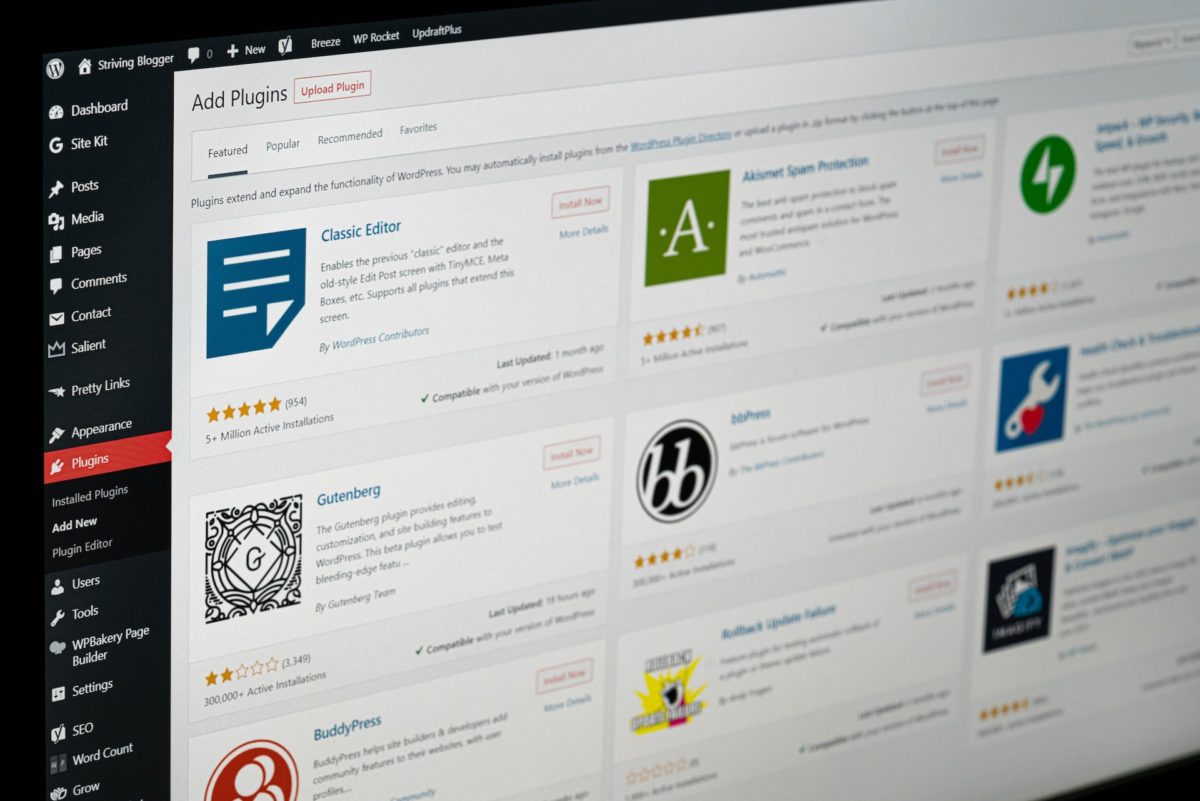
Landing page as a home page of a domain
To make your landing page the homepage of your domain, you need to change the default setting in WordPress, as the latest blog posts are displayed there automatically.
Create landing pages for different domain names
As you may be aware, a website can have multiple landing pages, which can be created under the same domain or different domain names. This is particularly useful if you want to create content for different regions or expand into new markets.
For instance, a food blogger who publishes recipes and cooking tips may want to offer an online cooking course. Instead of creating a new website, it is more convenient and cost-effective to add a custom domain with a landing page in WordPress. This approach saves a lot of money, which is especially important since you still need to run campaigns and allocate a certain ad spend.
While this may seem complex, some landing page builders come with built-in domain mapping, which allows you to create landing pages and map them to any domain name you choose.
How to build a website?
Building professional business websites is a time-consuming and expensive process, especially when starting from scratch with the assistance of a web designer. Maintaining a website can be costly as well.

Fortunately, you can use a page builder, such as WordPress, which is currently among the most popular tools in web development. It makes creating pages very easy, as you only need to sign up to create a stan dalone website.
To build the website, you simply enter the desired name and address of the page, then select a theme that you can later customize to your liking (e.g., change colors, graphics, layout, etc.). After that, you can build the products and services pages, as well as all the necessary sections for other content.
Finally, you can add content and create a navigation bar to make your website user friendly. Overall, the process is relatively simple, cost-effective, and less demanding, which makes it accessible to anyone.
Landing page vs website – can a landing page be a website?
After gaining an understanding of the key differences between a landing page and a website, you may want to know whether a landing page can function as a website. While it is possible to use a landing page as a basic website, it is unlikely to yield the desired outcomes.
The key differences between those types relate to their objectives and target audience. Only a dedicated business website with a few different pages can deliver the most favorable results. It can furnish comprehensive information about the company and familiarize users with it, while also enabling the creation of landing pages for a marketing campaign.
Landing page vs website – summary
Landing page and a website are not the same concept, the key difference between the two is their intended targets and audiences. A website generally serves informational purposes, while a landing page is typically used for marketing campaigns. However, if you are still not certain which option is better suited for your business, and lack the expertise in developing marketing websites, Nopio will support you through the entire process.
Before commencing any marketing efforts that involve creation of websites or landing pages, it is recommended to review our blog posts on marketing one pagers and the importance of WordPress for marketing.
With our guidance and helpful content, you will be well-equipped to create a professional website or a great landing page for your business.

